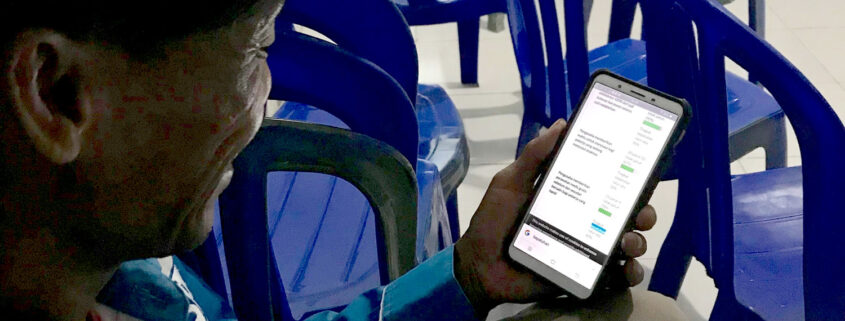Promoting Workers’ Rights through mobile internet
Can mobile phones and social media promote respect for workers’ rights in the garment industry?
Purpose
Since 2017, WageIndicator together with C&A foundation support a project which aims at strengthening transparency of working conditions and stimulating dialogue between employers and employees to improve and align working conditions with legal provisions. Interestingly, the tools to do so were online surveys and disclosure of results on a web-page, www.gajimu.com/garment
In 2019, StrategyHouse.dk worked with C&A Foundation and WageIndicator to assess the preliminary impact of the project, its effectiveness and relevance for workers in the garment industry in Indonesia.
The method
Evaluating the impact of a ‘cloud’ or web-based initiative necessitates a dual focus on the functionality of the social media platforms and their embeddedness with the ‘lived reality’ among garment workers, employers and brands.
To this end, StrategyHouse.dk adopted a two-pronged approach to the evaluation:
- We collected data on the gajimu.com/garment websites, accessible in Google Analytics.
- We collected data through semi-structured interviews and focus group discussions with intended users of the website, including employers, influencers in the sector and workers themselves.
Main results
The evaluation found that mobile surveying and disclosure through the internet had a strong potential to strengthen workers’ awareness about their rights, mobilise their unions to address issues of violations of the labour law and mobilise employers to comply with the labour law.
The main reasons to the change were that:
- Questioning in itself ‘form reality’. When asked in an enabling space, questions draw the audience’s – here the workers’ – attention to the issue being asked. It stimulates reflection, curiosity and internal learning. Questioning is therefore a very powerful and simple tool to help set an agenda and strengthen awareness.
- The disclosed survey results ‘set an agenda’ and helped raise expectations to workers’ trade unions that they addressed the disclosed issues. It also spoke to employers in that they rectified violations of the law and to buyers and brands, which honoured their social responsibility.
Another main finding was that ‘customization’ of surveys and social media platforms to workers’ internet behavior and the time they have available to use facebook or complete a survey, is of vital importance to the success of social media based campaigning. So is the importance to consider workers’ understanding of the questions raised when designing surveys and questionnaires.
Campaigning and surveying through mobile internet therefore could not ‘stand alone’ but should be introduced by facilitators with skills to create a platform for reflection and dialogue among workers completing the survey and with a mandate to assist trade unions communicate and follow-up on survey findings once disclosed on the internet.
These findings were consequently incorporated into the intervention’s second phase.



